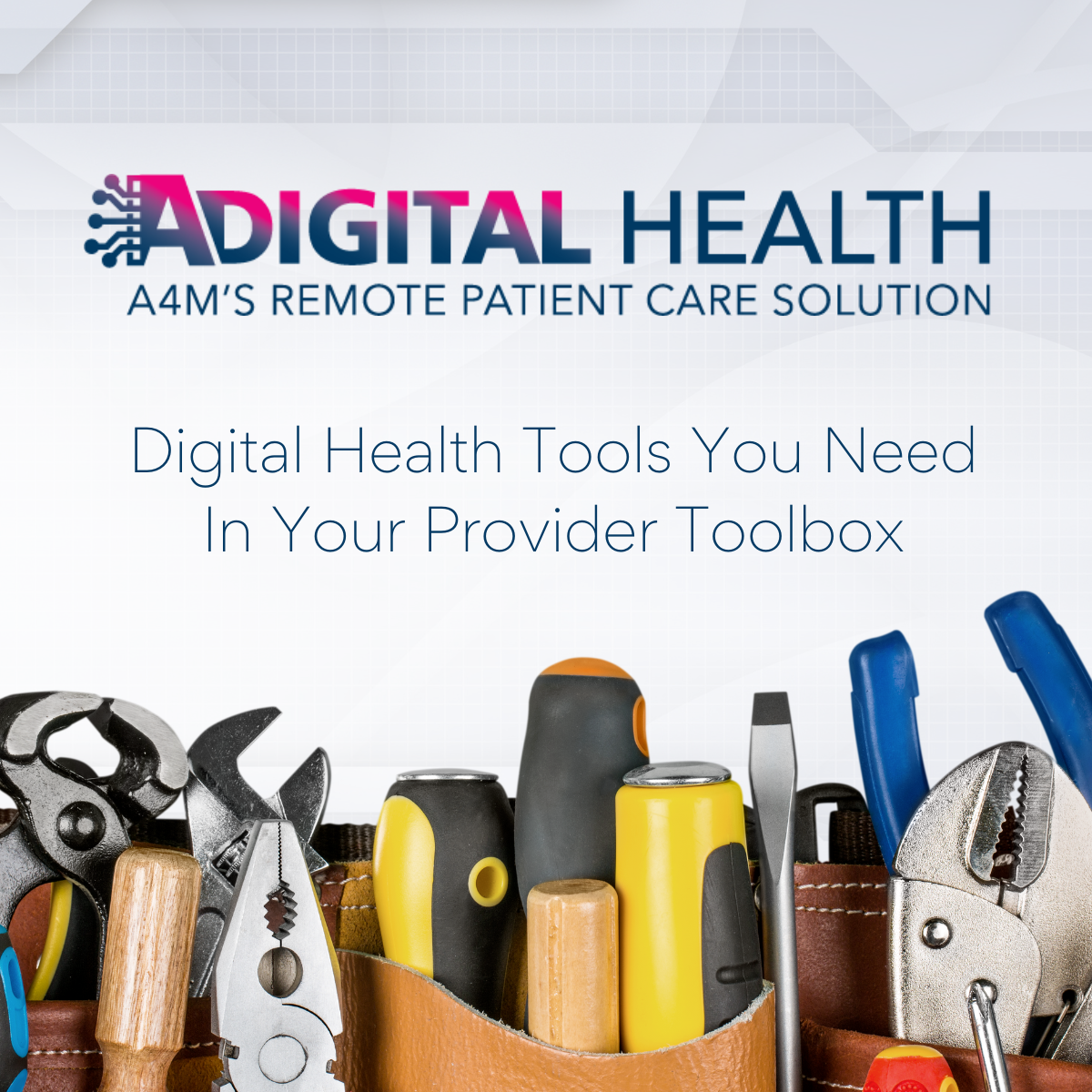Digital Health Tools You Need In Your Provider Toolbox

How many times have you told your patients what to do during an office visit only to find that they’ve forgotten most of the information or got overwhelmed and gave up on applying your care instructions altogether? It’s a disappointing, albeit, common part of practicing medicine.
If you could provide your patients with care instructions 24/7, and be there to help them figure out what to do, step by step, we know you would. But unfortunately, there’s only one you, and a myriad of patients.
Thankfully, the expansion of technology has allowed doctors to care for and educate their patients beyond the four walls of their practice. Giving you the ability to automatically care for patients, remotely, whether you’re on vacation or seeing other patients in your office. This type of care is also known as automated or remote patient care.
If you’re interested in expanding your expertise in the area of remote patient care, these are the Digital Health tools you need in your provider toolbox:
Cloud Based Monitoring Systems for You and Your Patients
A novel concept in the last 10 years has been the “cloud.” Oxford Dictionary defines cloud computing as “the practice of using a network of remote servers hosted on the internet to store, manage, and process data, rather than a local server or a personal computer.”
Why is using Cloud Based technology a good idea? You and your patients can access data anywhere on any computer with internet access and all you need is your username and password, in other words you don’t have to rely on one device to store and function properly.
So if you’re interested in monitoring your patients biometric data, for example, you would want to utilize a service that you and your patients can easily access via the internet. This will allow you to view their progress quickly and you’ll never have to worry about losing patient data — it’s all in the cloud!
Automated Patient Education
If you find that your patients are struggling to adhere to your specific care instructions in office, even if you’ve provided them with written or PDF materials, it’s time to consider an automated care plan.
This type of technology allows you to send your care plan to patients every day and can include instructions for how to take medication, what foods to eat, certain exercise and other regimens.
Click here to see an example patient education care plan as a patient would see it
This is just one example but your care plans can include whatever you’d like them to such as photos, videos, tasks, exercises, recipes, documents, questionnaires and more. By prescribing this automated plan, your patients will have daily to-do’s and instructions that allow them to follow along with a step-by-step program. Because you can’t be there to tell your patients what to do every single day, this technology is your stand in, and if they have questions they can reach out to you!
If this technology is on a cloud based platform, any progress your patients track will be saved automatically, and you’ll want to keep track of this to help improve their compliance and overall success.
Telehealth Technology for Group Visits
A technology that you’re likely familiar with, if not already utilizing in your practice! However, something you may not be leveraging is the use of group visits via telemedicine.
Group Visits can provide a multitude of benefits to you as the provider as well as to your patients. It can save you time, by allowing you to address patients with similar health issues/concerns all at once. It can reduce patient stress and loneliness because it allows them to address their issues in a group setting which can help them to feel more secure during their visit. Patients can also benefit from greater education from the provider due to more time spent with the whole group. Education can also come from the questions of other patients and benefiting from those answers.
Integrated Health Devices
It’s a lot to ask certain patients to track all of their biometric or activity data manually. But, it’s very likely that your patients wearables, phone and other devices are already tracking this for them. Your patients may already be using technology such as Fitbit, AppleHealth, or a smart scale to track their data.
By sharing this data with you, their provider, you can make recommendations and suggestions based off of these metrics. This will help you and your patients to work smarter, not harder with the use of medical technology.
HIPAA Compliant Communication with your patients
If you are remotely caring for your patients, one thing you’ll absolutely have to manage is your ability to be HIPAA compliant. No provider ever wants to intentionally violate HIPAA. There are so many channels for communication nowadays that the lines are certainly blurred and sometimes it’s tempting to revert to less secure means of communication, but why risk it?
The best thing to do is to try and keep your communications all in one HIPAA space, so your correspondence is not only private and compliant but also organized and easy to refer back to.
The expansion of technology has allowed doctors to care for more patients in less time and that’s why A4M offers ADigital Health, a remote patient care and monitoring solution. If you’re not already using ADigital Health, start your free trial today.
